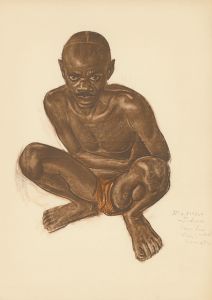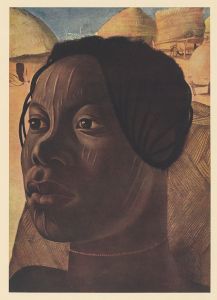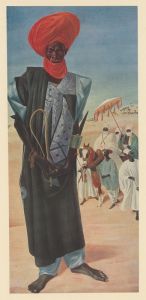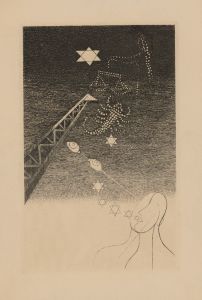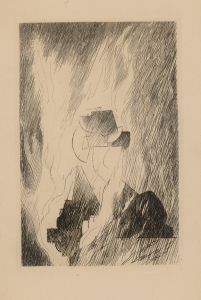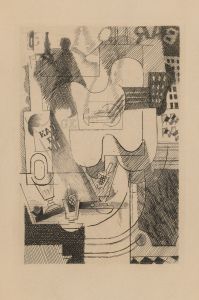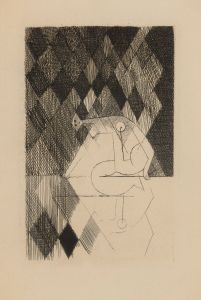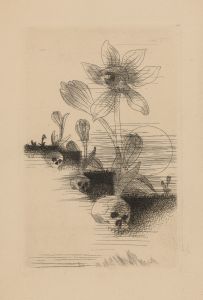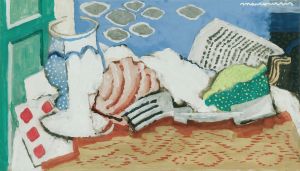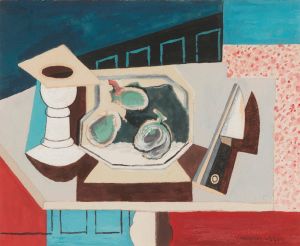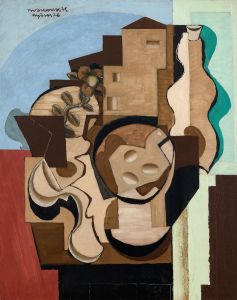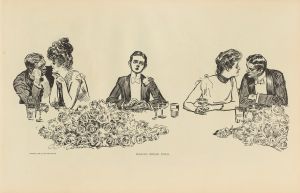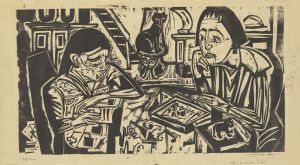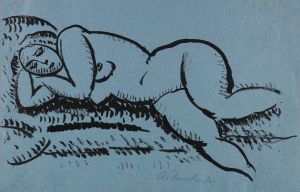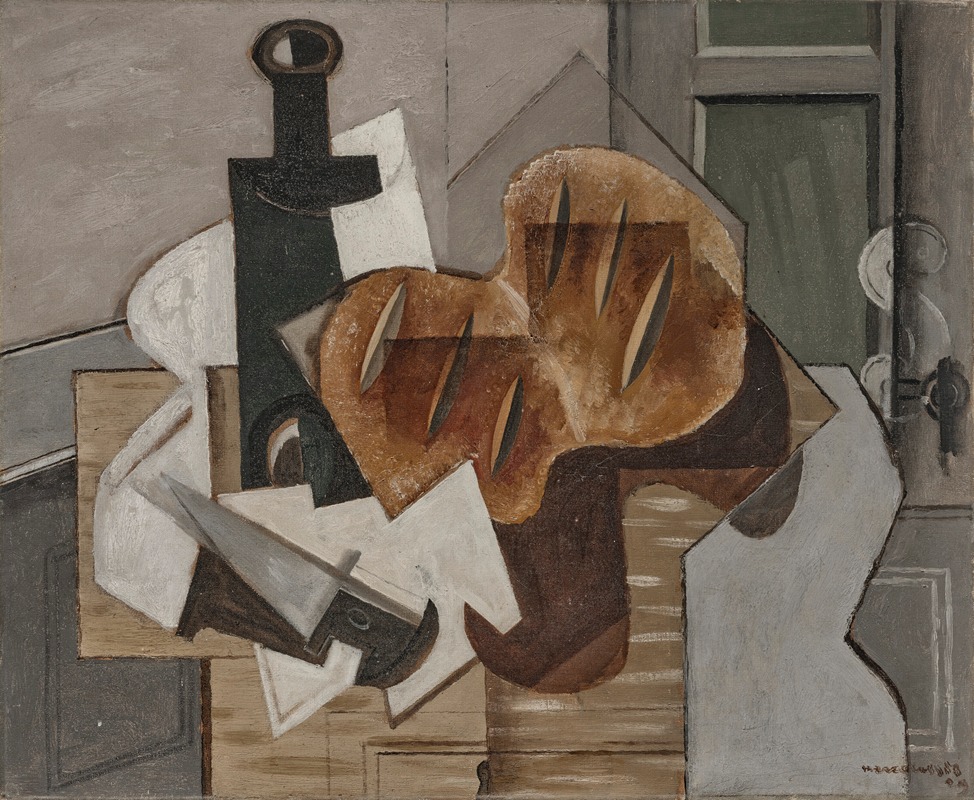
Couteau, bouteille et pain breton
A hand-painted replica of Louis Marcoussis’s masterpiece Couteau, bouteille et pain breton, meticulously crafted by professional artists to capture the true essence of the original. Each piece is created with museum-quality canvas and rare mineral pigments, carefully painted by experienced artists with delicate brushstrokes and rich, layered colors to perfectly recreate the texture of the original artwork. Unlike machine-printed reproductions, this hand-painted version brings the painting to life, infused with the artist’s emotions and skill in every stroke. Whether for personal collection or home decoration, it instantly elevates the artistic atmosphere of any space.
Louis Marcoussis was a Polish-French painter and engraver associated with the Cubist movement. Born Ludwik Kazimierz Wladyslaw Markus in Warsaw in 1878, he later adopted the name Louis Marcoussis after moving to Paris in 1903. Marcoussis became an integral part of the Parisian avant-garde scene, interacting with notable artists such as Pablo Picasso, Georges Braque, and Juan Gris. His work is characterized by its exploration of Cubism, a style that emphasizes abstract forms and the deconstruction of objects into geometric shapes.
One of Marcoussis's notable works is "Couteau, bouteille et pain breton" (translated as "Knife, Bottle, and Breton Bread"). This painting exemplifies his mature Cubist style, which often involved the use of muted colors, intricate compositions, and a focus on everyday objects. The title itself suggests a still life composition, a common subject in Cubist art, where ordinary items are depicted in a fragmented and abstract manner.
In "Couteau, bouteille et pain breton," Marcoussis employs the typical Cubist technique of breaking down objects into geometric shapes and reassembling them on the canvas. This approach challenges the viewer's perception, encouraging them to engage with the painting by piecing together the fragmented elements to form a cohesive image. The use of a knife, bottle, and bread as subjects reflects the Cubist interest in depicting mundane, everyday items, elevating them to the realm of fine art through abstraction.
Marcoussis's color palette in this work is subdued, with earthy tones and subtle contrasts. This choice of colors is characteristic of his style, which often avoided the bright, vivid hues seen in other modernist movements. Instead, Marcoussis focused on creating depth and texture through the interplay of light and shadow, as well as the juxtaposition of different shapes and forms.
The painting also reflects Marcoussis's interest in the cultural and regional aspects of his subjects. The inclusion of "pain breton" (Breton bread) in the title suggests a connection to Brittany, a region in France known for its distinct cultural identity and traditions. This regional reference adds an additional layer of meaning to the work, inviting viewers to consider the cultural significance of the depicted objects.
Marcoussis's contribution to the Cubist movement is significant, as he brought a unique perspective to the style through his focus on still life compositions and his subtle, nuanced approach to color and form. His work, including "Couteau, bouteille et pain breton," demonstrates the versatility and depth of Cubism as an artistic movement, showcasing how everyday objects can be transformed into complex, abstract compositions that challenge traditional notions of representation.
Throughout his career, Marcoussis continued to explore the possibilities of Cubism, both in painting and printmaking. His works are held in various collections worldwide, reflecting his enduring influence on modern art. "Couteau, bouteille et pain breton" remains an important example of his artistic legacy, illustrating his mastery of Cubist techniques and his ability to infuse ordinary subjects with profound artistic significance.





